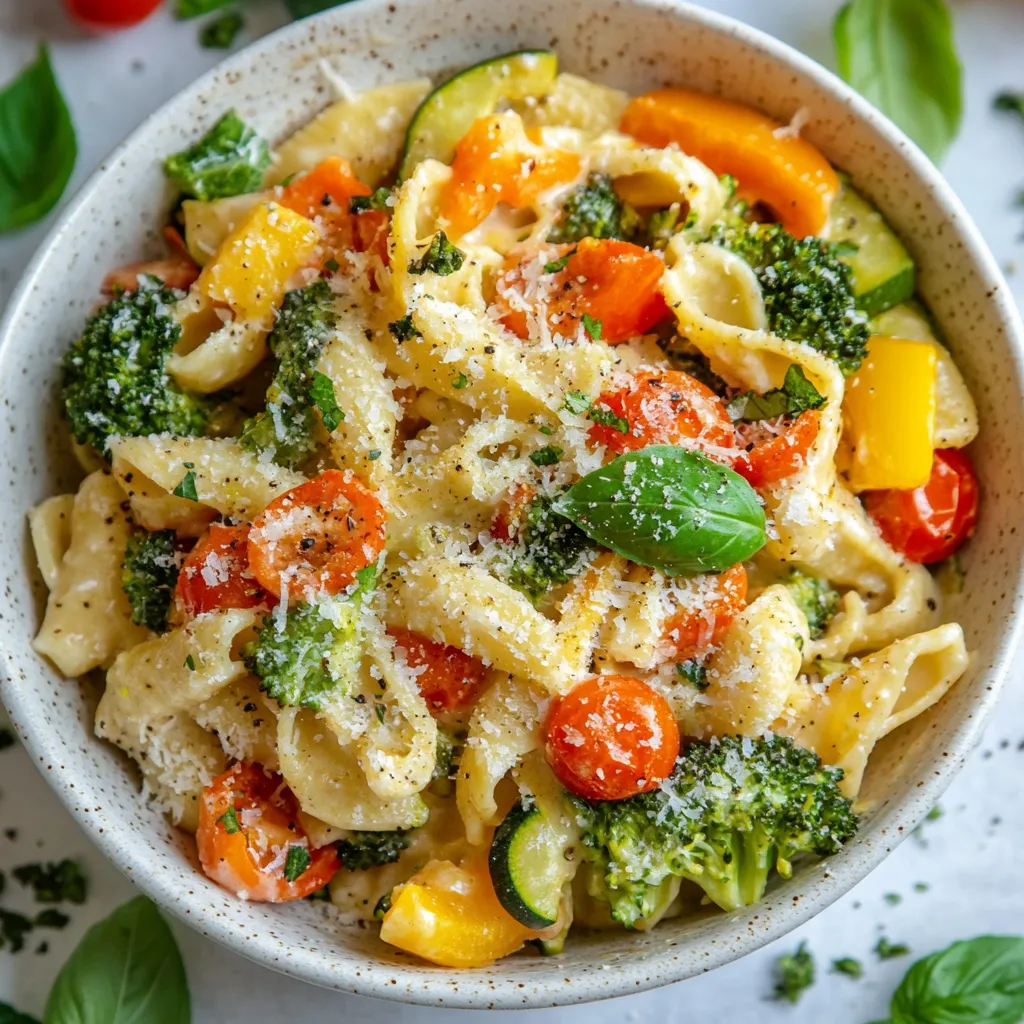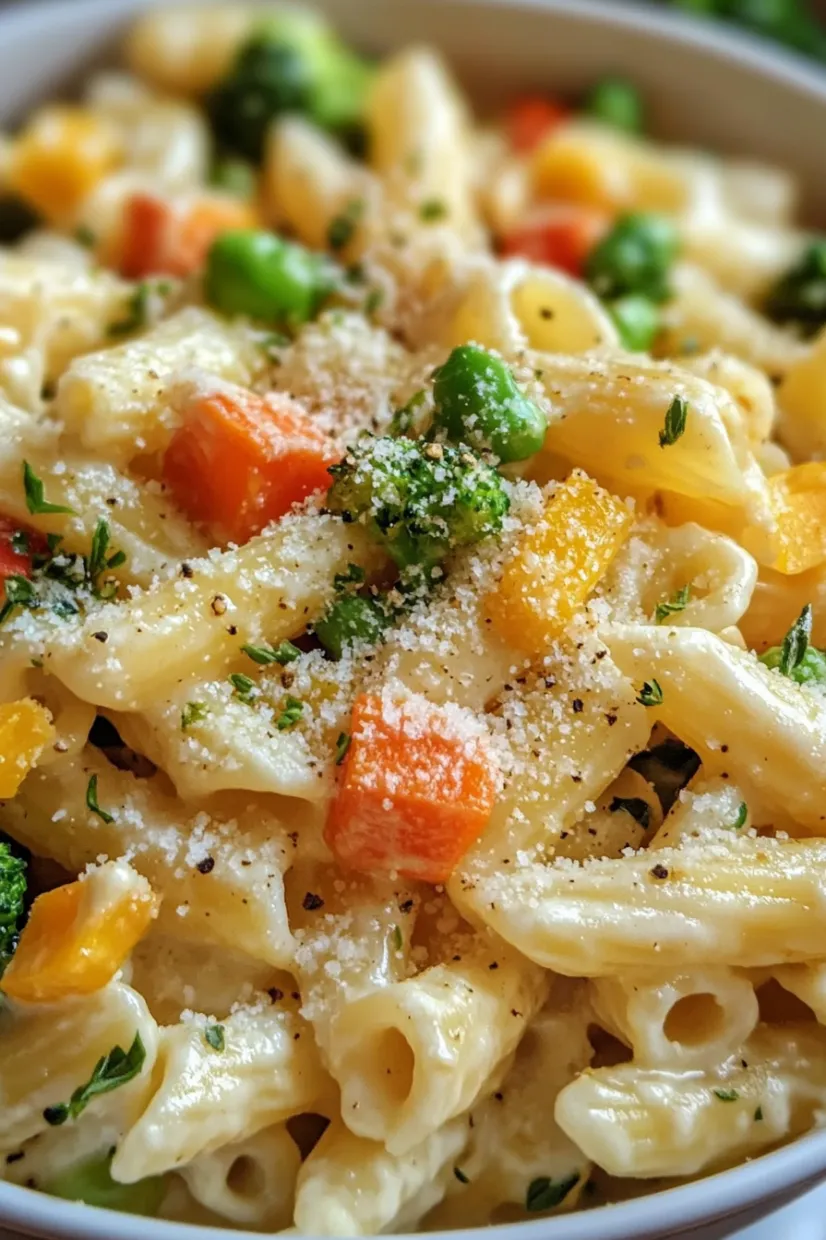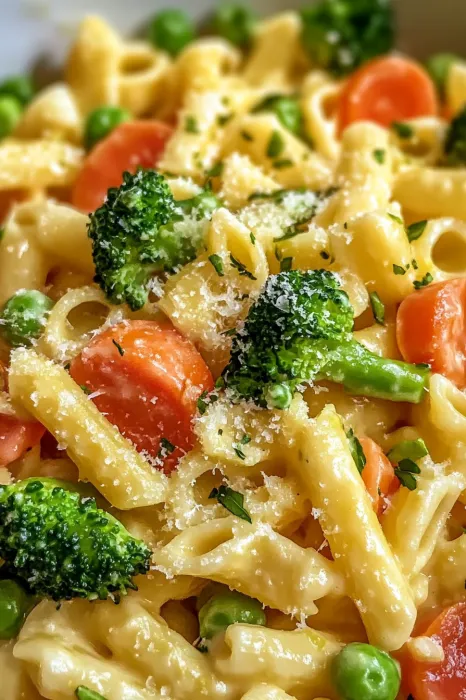 Pin it
Pin it
This vibrant pasta primavera has been my go-to dish for showcasing the colorful bounty of seasonal vegetables in a deliciously creamy sauce. The combination of tender pasta with crisp veggies and a light Parmesan cream sauce creates a restaurant-quality meal that's surprisingly simple to prepare at home.
I first created this pasta primavera when hosting an impromptu dinner party and needed something impressive yet unfussy. Now it's become my signature dish that friends specifically request when they visit, especially during spring and summer months when vegetables are at their peak.
Ingredients
- Pasta: Your choice of shape works here but penne or fettuccine hold the sauce beautifully and catch small vegetable pieces
- Olive oil: Use a good quality extra virgin for the best flavor foundation
- Broccoli florets: These add wonderful texture and absorb the creamy sauce in their tiny floret heads
- Bell peppers: Choose different colors for visual appeal and varying sweet flavors
- Carrots: These add a subtle sweetness and wonderful color contrast
- Cherry tomatoes: These burst with juicy freshness and add bright acidity to balance the cream
- Zucchini: A mild summer squash that cooks quickly and takes on surrounding flavors
- Garlic: Fresh minced garlic provides an aromatic base that transforms the dish
- Heavy cream: Creates the luxurious sauce that coats everything in silky richness
- Parmesan cheese: Use freshly grated for the best melting quality and authentic flavor
- Butter: Just a tablespoon adds glossy richness to the finished sauce
- Fresh basil: Optional but highly recommended for its aromatic finish and color
Step-by-Step Instructions
- Cook the Pasta:
- Boil your pasta in well salted water until perfectly al dente about 1 minute less than package directions. The pasta will continue cooking slightly when added to the sauce so slightly undercooking ensures the perfect texture. Be sure to reserve some starchy pasta water before draining as this secret ingredient helps create a silky sauce that clings to every bite.
- Sauté the Hardy Vegetables:
- Heat olive oil in a large skillet until it shimmers then add the vegetables that take longer to cook broccoli carrots and bell peppers. Cook these for 4 to 5 minutes until they begin to soften but still maintain a pleasant crispness. This staged cooking ensures each vegetable reaches the perfect doneness.
- Add the Quick Cooking Vegetables:
- Introduce the zucchini cherry tomatoes and minced garlic to the skillet. These require less cooking time to prevent them from becoming mushy. The tomatoes will begin to soften and release their juices creating a flavorful base for the sauce while the garlic becomes fragrant without burning.
- Create the Creamy Sauce:
- Add the butter allowing it to melt into the vegetables then pour in the heavy cream. Let this come to a gentle simmer before sprinkling in the Parmesan cheese. Stir continuously as the cheese melts creating a smooth velvety sauce that coats the back of a spoon. Season with salt and pepper tasting and adjusting as needed.
- Combine and Finish:
- Add the drained pasta directly to the sauce tossing gently but thoroughly to ensure every piece of pasta and vegetable is coated in the creamy sauce. If the sauce seems too thick add a splash of the reserved pasta water which contains starch that helps the sauce cling to the pasta. The finished dish should be silky but not soupy.
 Pin it
Pin it
My absolute favorite part of this dish is the moment the cream hits the pan with all those colorful vegetables. The transformation from simple ingredients to a cohesive luxurious meal always feels like a small miracle in my kitchen. My children who once picked out vegetables now clean their plates when I serve this pasta which feels like the ultimate cooking victory.
Perfect Vegetable Combinations
The beauty of pasta primavera lies in its adaptability to whatever produce looks freshest at the market. In spring I love using asparagus snow peas and early zucchini. Summer calls for corn cherry tomatoes and bell peppers while fall versions might include butternut squash kale and mushrooms. The key is cutting everything into similar sizes so they cook evenly and creating a colorful palette that makes the dish visually appealing.
 Pin it
Pin it
Making It Ahead
This pasta primavera can be prepared partially in advance to make weeknight dinners easier. Cook the vegetables and prepare the sauce up to two days ahead then refrigerate. Cook fresh pasta when ready to serve and gently reheat the sauce adding a splash of cream or pasta water to refresh it. For best results keep the pasta separate until just before serving to prevent it from absorbing too much moisture and becoming soggy.
Serving Suggestions
While this creamy pasta primavera stands beautifully on its own I love serving it with a simple arugula salad dressed with lemon juice and olive oil for a peppery contrast to the creamy pasta. A glass of crisp Pinot Grigio or Sauvignon Blanc complements the flavors wonderfully. For a heartier meal garlic bread makes the perfect accompaniment to soak up any remaining sauce on your plate.
Frequently Asked Questions
- → What type of pasta works best for this dish?
Penne, fettuccine, or any short pasta shapes with ridges for holding sauce work well.
- → Can I make this dish lighter?
Substitute half-and-half for heavy cream or use plant-based cream alternatives.
- → Can I add protein to this dish?
Yes, grilled chicken, shrimp, or tofu are excellent protein additions to complement the flavors.
- → How can I adjust the sauce consistency?
Use the reserved pasta water to thin out the sauce until the desired texture is achieved.
- → What vegetables can I substitute with?
Seasonal options like asparagus, peas, or spinach can replace the listed ingredients for variety.
